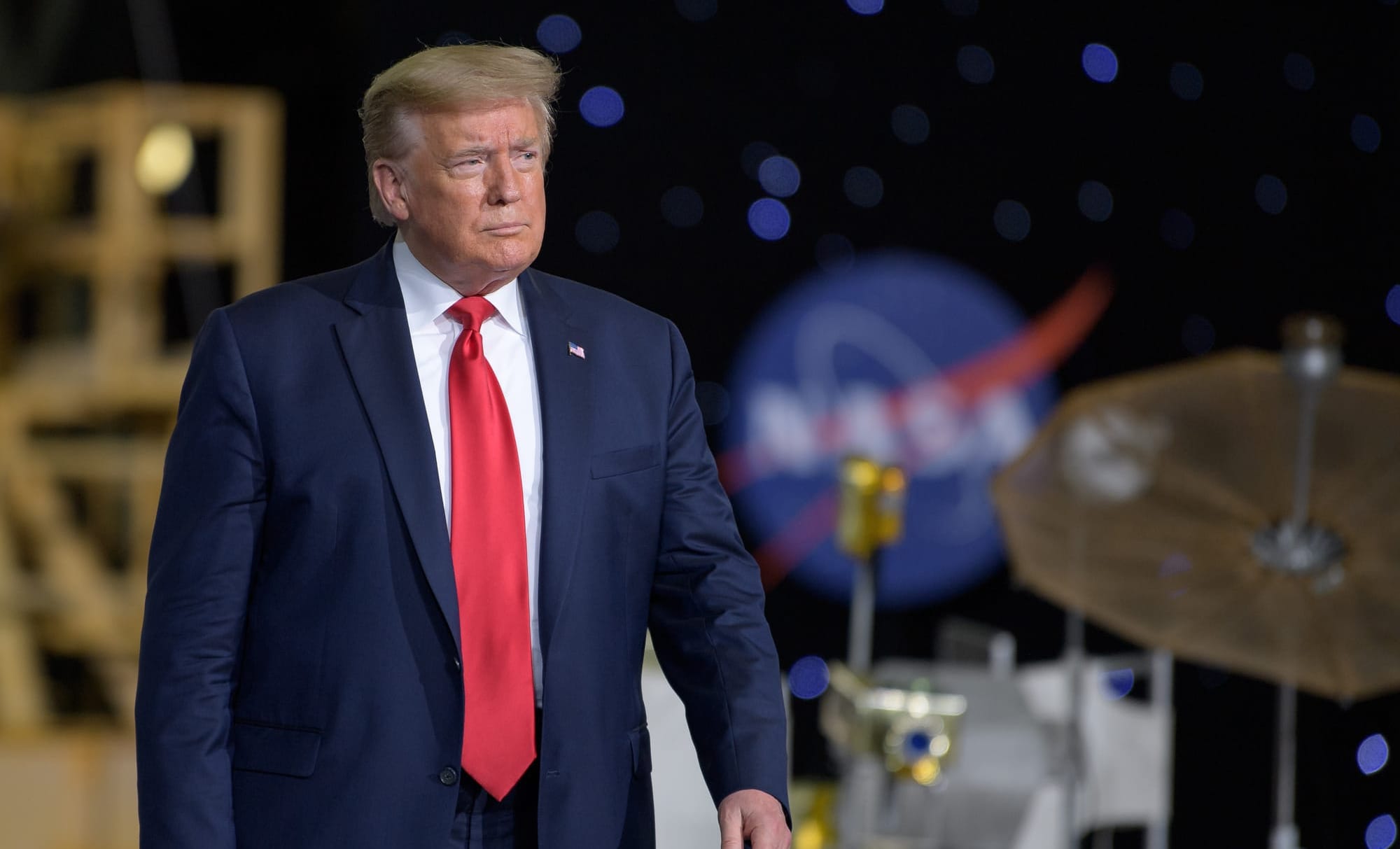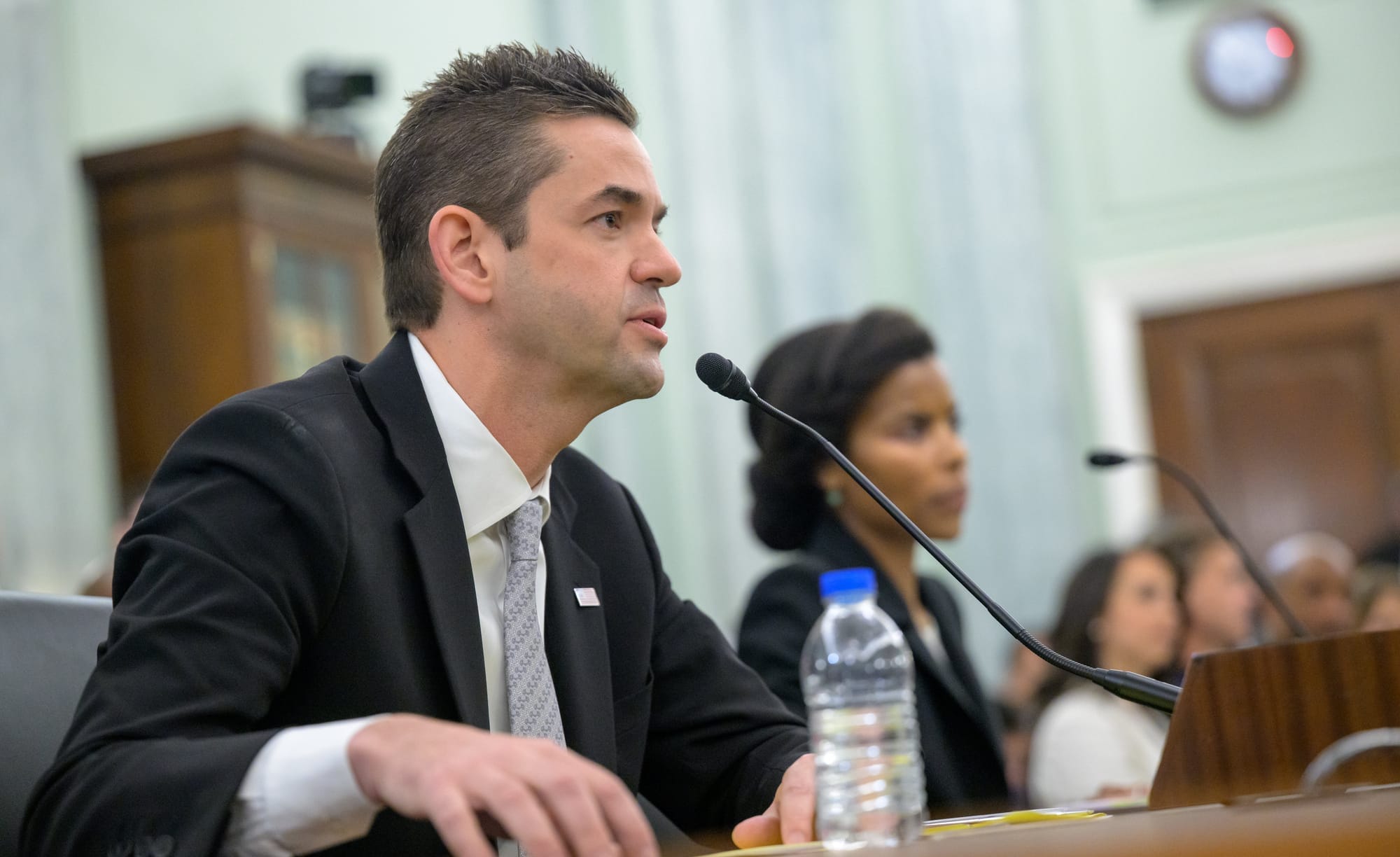Table of Contents
Note: All funding figures are in United States Dollars.
NASA released details on its fiscal year 2026 budget on May 30th, confirming details on what the Trump Administration, which has few plans for space, would like to cut, first disclosed in a budget overview in early May. With the budget proposal, $6 billion in agency funding would be lost, along with major programs
However, before we touch on the budget, revealed amid the fallout of understanding the details of what's being cut, the Trump White House announced it was withdrawing its support for Jared Isaacman as the Administrator of NASA. Following the withdrawal, Donald Trump took to social media to state:
"After a thorough review of prior associations, I am hereby withdrawing the nomination of Jared Isaacman to head NASA. I will soon announce a new Nominee who will be Mission aligned, and put America First in Space."
The withdrawal came a week after the U.S. Senate planned to vote on his position. In the lead-up to a now-cancelled Senate vote, Isaacman was able to secure support from both sides of U.S. politics as well as from industry.
Coincidentally, or as planned, the withdrawal of White House support for Isaacman came as billionaire head of SpaceX Elon Musk was leaving his position in the U.S. government, having greatly benefited. Musk is a strong supporter of Jared Isaacman, with the two aligning politically since Trump's election win.
Now, for the bloodbath of a budget proposal. The proposed fiscal year 2026 budget for NASA is a dramatic 24 percent funding cut that would reduce the agency from $24.8 billion to $18.8 billion, while eliminating 5,538 jobs, nearly one-third of NASA's workforce. Science programs in particular face the steepest cuts with a nearly 50 percent reduction.
The proposed cuts restructure the agency's human spaceflight programs by canceling the Space Launch System rocket and Orion capsule after the Artemis III mission in 2027, as well as the Gateway lunar space station before it can launch. Meanwhile, the International Space Station would see cuts exceeding $500 million. These systems would then be replaced with commercial alternatives as part of a redesigned program architecture, while the International Space Station would be wound down for retirement and replaced by privately owned space stations.
NASA's science programs face devastating reductions, with the Science Mission Directorate cut by nearly 50 percent and astrophysics slashed by 70 percent. Major active missions would be terminated, including Mars Sample Return, Mars Odyssey, MAVEN, Juno, New Horizons, and OSIRIS-APEX. Flagship telescopes aren't spared from the cuts, with the James Webb Space Telescope facing a 20 percent cut while Hubble's budget drops to around $85 million annually.
Earth science programs face severe cuts under the budget proposal, as the Earth Science Division is among those experiencing the biggest reductions as part of the overall science budget slash. The budget eliminates climate research programs and cancels the $2 billion Landsat Next mission, which was scheduled to launch by 2030-2031 to provide improved Earth observation capabilities. Instead, NASA is directed to find "more affordable ways to maintain the continuity of Landsat imagery" while deprioritizing what the administration considers "low-priority climate monitoring satellites", unsurprising for a White House that doesn't believe in climate change.
Like other programs, space technology is facing devastating cuts with funding slashed by $531 million, or approximately half the directorate's budget. Most significantly, the budget cancels the Demonstration Rocket for Agile Cislunar Operations (DRACO) program, a joint NASA-DARPA initiative that awarded Lockheed Martin a $499 million contract in 2023 to develop nuclear thermal propulsion technology with testing planned for 2026-2027. The cuts eliminate NASA's development of nuclear thermal and nuclear electric propulsion technologies that could dramatically reduce travel times to Mars and other deep space destinations.
Alongside slashing items in space, NASA's Mission Support Directorate faces an over $1.1 billion cut in funding. This will force the agency to drastically reduce facility maintenance, construction, and center operations funding alongside the massive workforce cuts. Meaning the agencies' aging infrastructure at centers like Kennedy, Goddard, JPL, and Marshall would face deferred maintenance, reduced operational capacity, and potential facility closures or mothballing of less critical buildings.
Education and outreach programs would be completely eliminated under the budget, with all STEM engagement funding and diversity, equity, and inclusion programs cut entirely.
The effects of the budget cuts go beyond just affecting U.S. space efforts too. Notably, the European Space Agency has been contributing to the Orion spacecraft, providing its service module, and hardware for the Gateway space station in exchange for flight opportunities. Additionally, the budget proposes ending NASA’s involvement in the Rosalind Franklin Mars rover mission, leaving it without a rocket to head to Mars (again) and a radioisotope heater unit to generate power and survive the Martian night. Cancelling European hardware intended for Artemis and withdrawing support for the Rosalind Franklin rover is a major geopolitical upset that will undermine the continent's trust in U.S. space endeavors.
These cuts will gut institutional knowledge, terminate crucial climate and space missions, eliminate critical technologies like as nuclear propulsion, and upset a key international partner. Infrastructure cuts would further reduce NASA's operating capabilities, while growing reliance on commercial technologies could stifle innovation. The long-term consequences could be irreversible, transforming NASA from a world-class R&D agency to a contract management organisation with limited scientific and strategic capabilities.
Despite the overall reduction of $6 billion at NASA, some parts of the agency have a planned funding increase, primarily for commercial space systems and Mars exploration. The budget allocates over $7 billion for lunar exploration programs, maintaining substantial funding for moon missions while shifting from NASA-developed systems to commercial alternatives, as mentioned previously. This includes funding to replace the canceled Space Launch System and Orion capsule with "more cost-effective commercial systems", basically funding a new rocket and spacecraft.
The budget also introduces $1 billion in new investments specifically for Mars-focused programs, creating a new funding stream despite canceling existing Mars missions like Mars Sample Return and active planetary missions. This Mars funding appears designed to support future human exploration of the red planet through commercial partnerships rather than a traditional NASA mission architecture. However, few companies are actively developing hardware for potential crewed Mars missions, likely meaning human-rated lander and transfer vehicle contracts will go to SpaceX with its Starship-Super Heavy rocket.
Current Acting Administrator and yes-man of Trump wishes at NASA, Janet Petro, sent out two short agency-wide messages following the detailed fiscal year 2026 budget and the withdrawal of support for Jared Isaacman, ending with her standard "Embrace the Challenge". Those messages were grounded in the reality of the dramatic shifts, compared to her previous bizarre support of the cuts, where she stated:
“This proposal includes investments to simultaneously pursue exploration of the Moon and Mars while still prioritizing critical science and technology research,” – “I appreciate the President’s continued support for NASA’s mission and look forward to working closely with the administration and Congress to ensure we continue making progress toward achieving the impossible.”
At the moment, the 2026 budget proposal would need to pass through Congress to be enacted. However, Congress is Republican controlled so there's a good chance it will.
Surprisingly, the Miami Herald reports citing a Marquette Law School Poll, most Americans are in favor of slashing NASA's budget in order to relieve American debt, despite the space agency's budget making up under 0.5 percent of the U.S. government budget each year. Additionally, a majority of those questioned believe that sending astronauts to the Moon or Mars shouldn't be a priority.
Oh, and alongside the massive budget cuts, NASA is changing its performance criteria for agency personnel. Instead of being measured on innovation, collaboration, personnel growth, and program results, employees will now be evaluated on faithfulness to Presidential policies, efficiency, and organizational goals.






